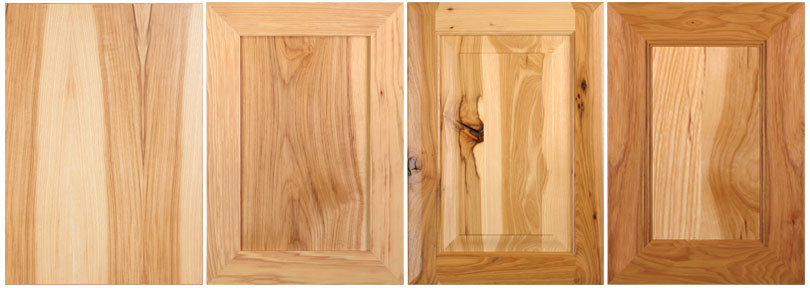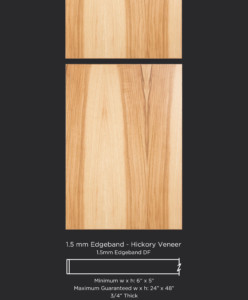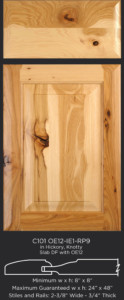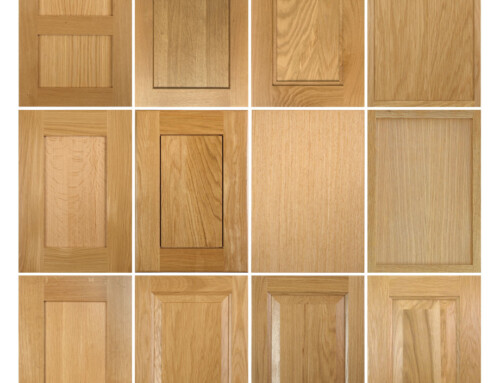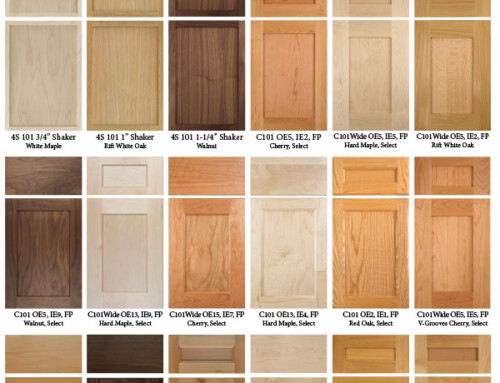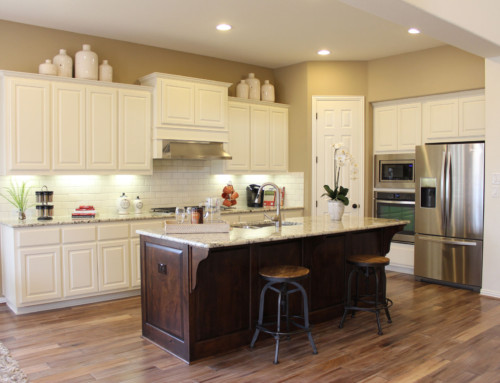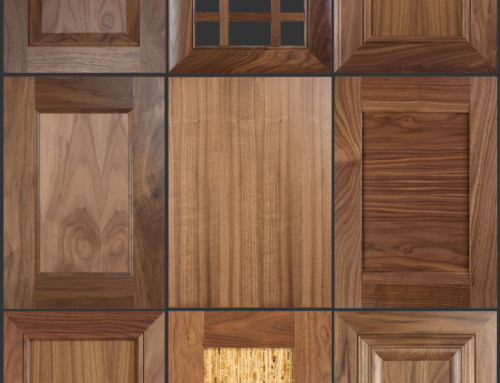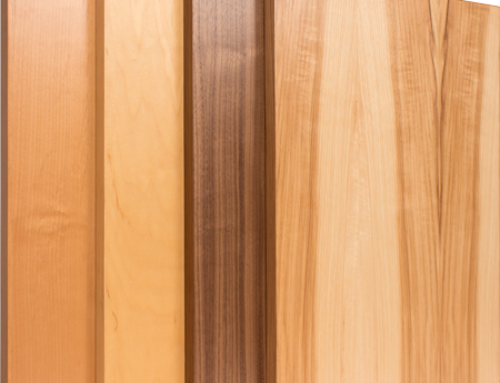One of TaylorCraft Cabinet Door Company’s popular wood species for cabinet doors is hickory (or as some call it “pecan”). We are asked from time to time what the difference is between pecan and hickory, whether they are really the same thing, which one we carry, and whether we sell a mix of the two.
TaylorCraft Cabinet Door Company purchases and sells northern hickory for superior quality cabinet doors and drawer fronts. The hickory we purchase is very dense, heavier than oak, with considerable variation in color and grain, giving the wood a rustic, unique character many customers prefer (shown below: natural hickory-left, knotty hickory-right).
Northern hickory is generally very slow growth and the rings are tighter than on southern hickory. Tighter rings tend to look much better and slow growth creates a more stable product. True hickories (as opposed to pecan hickories) produce the strongest wood of any of the North American commercial hardwood species.
We thought we would give you the definition of hickory and pecan from an expert in the field, Gene Wengert. Mr. Wengert is President of The Wood Doctor’s Rx, Professor Emeritus at the University of Wisconsin-Madison, researcher at the US Forest Products Lab, teaches over 30 wood processing classes and seminars per year for the wood products industry and has authored eight books and over 400 articles relating to wood products.
From Gene Wengert, technical advisor Sawing and Drying Forum (as featured on woodweb.com):
“Hickory lumber (Genus: Carya) comes from eight different trees – four species of “true hickory” (shagbark, pignut, shellbark, and mockernut) and four species of “pecan hickory” (bitternut, pecan, water hickory, and nutmeg hickory). (Note that there are many local, common names for these species, but I have given the most often used names.)
“HERE IS THE KEY: In the market place, you can get any of the eight species when you buy hickory lumber.
“True hickory is found throughout the eastern U.S. However, the range of pecan hickories is limited – bitternut is throughout the eastern U.S., pecan is found from Texas to Louisiana, through Missouri and Indiana, water hickory in Texas through South Carolina, and nutmeg in Texas and Louisiana.
“Separation of lumber into the two groups is impossible (they have the same color, which varies from site to site) unless chemical or microscopic tests are used. I do know that hickory, and not pecan, is used for drumsticks as pecan sticks thud and do not ring. Further, I have seen more pecan with poor color (streaky, variable) than hickory and I suspect that this relates to using wood from orchards.
“Some hickory is denser than some pecan, but again the variability from site to site means that density is not a perfect separator. On the average the density of true hickories average about 50 pounds per cubic foot at 8% MC. This is heavier than oak. Pecan hickories average about 42 pounds per cubic foot, which is 16% lighter and which means that strength and machining will be quite a bit different. Strength and machining are very sensitive to density–10% less dense can mean more than 20% weaker.”
For more information and photos, view this link to an informative article from Purdue University on the differences between northern and southern hickory and pecan. As we mentioned, TaylorCraft offers true northern hickory and after reading the article, you can see some of the reasons we are specific and selective in purchasing this material. This is an incredibly strong, beautiful material that does not mar or dent easily and will look beautiful for many generations.
We welcome your feedback and suggestions and look forward to hearing from you.
Heide Osborn


